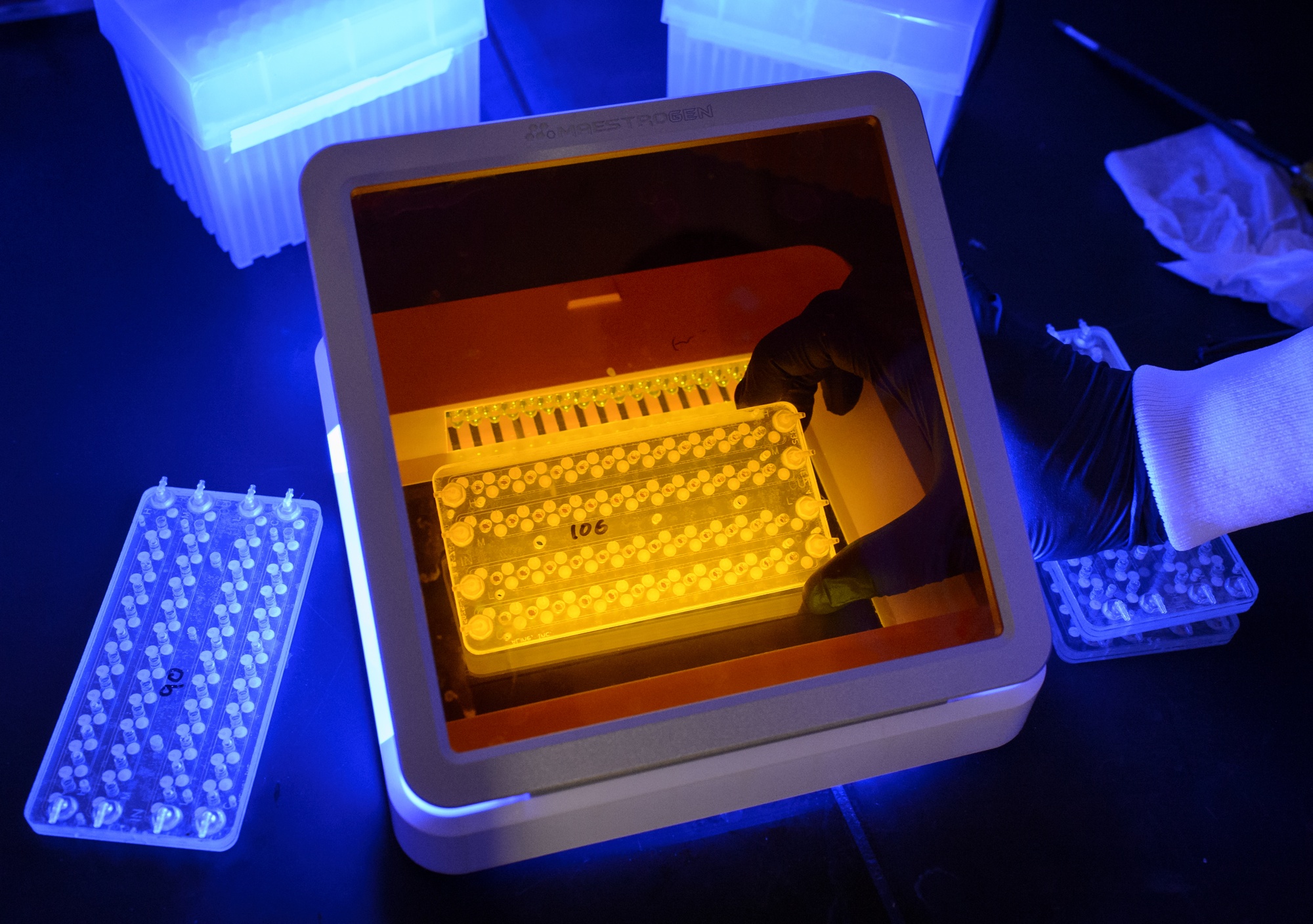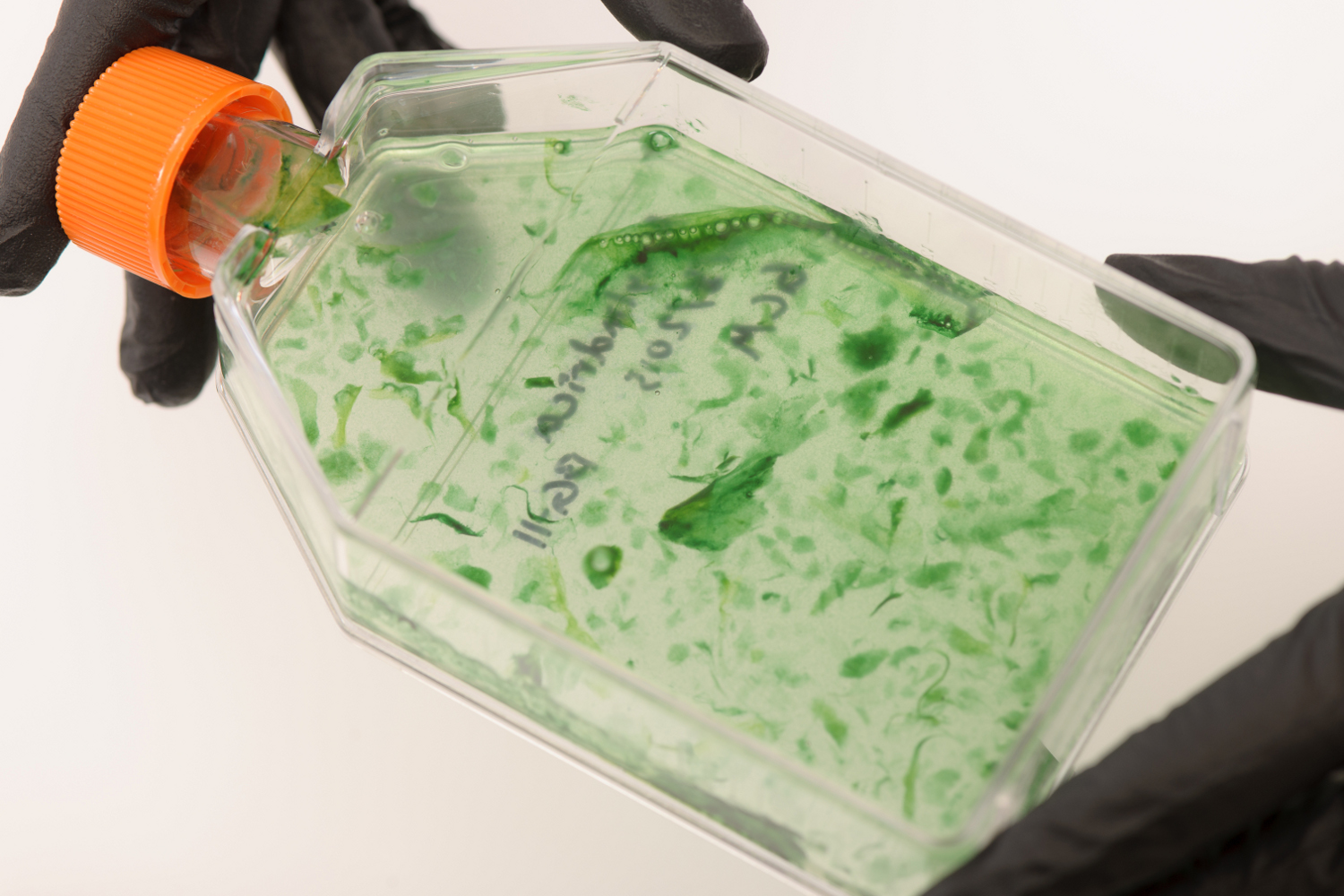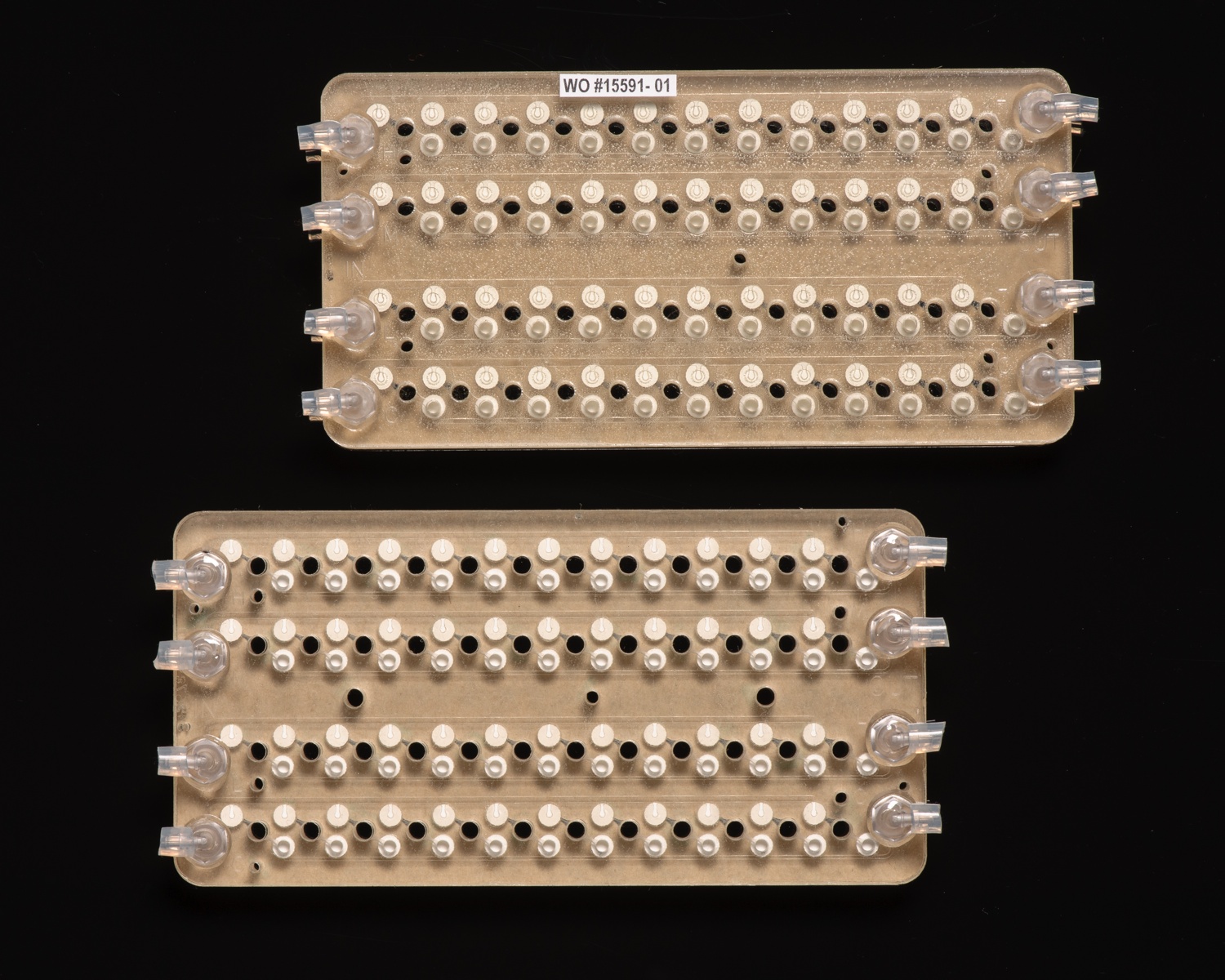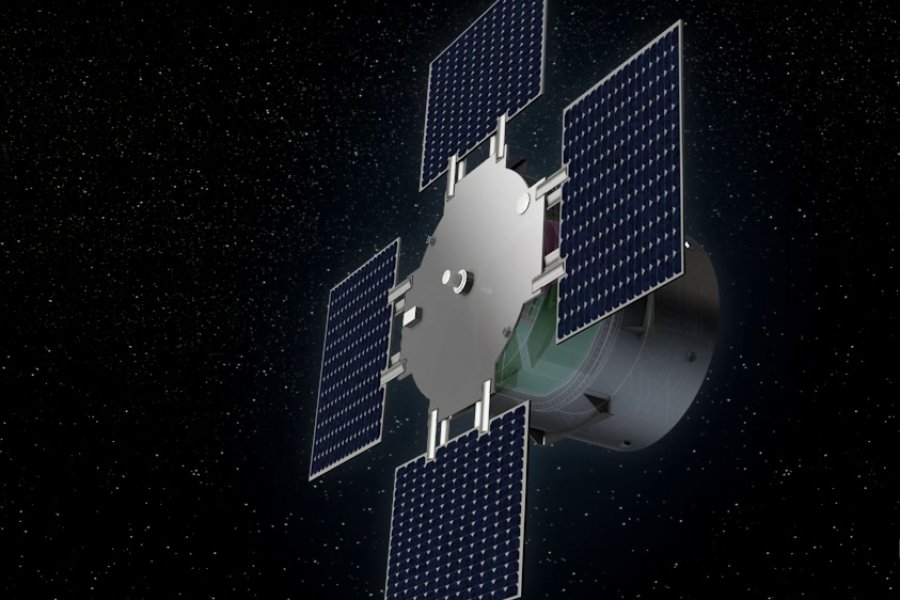To Survive on Mars, BYO Bacteria
Microbes could form the basis of a human life support system on the Red Planet.

A central tenet of space exploration is “pack light.” That philosophy is a matter of both practicality and economics — it’s expensive to launch stuff out of this world. So as NASA gears up to touch down on Mars, research is turning to how astronauts will produce what they need on site.
To that end, scientists are banking on bacteria for life support.
The idea is that Mars-bound astronauts would bring with them a small batch of microorganisms — some genetically modified, others not — that can synthesize the building blocks for a range of products, including construction materials, textiles, biofuels, and pharmaceuticals. Once situated on terra firma, Red Planet pioneers would then grow their microscopic flock into a bustling farm.
“Instead of having a sheep making wool, you engineer a yeast or a Bacillus subtilis to make the products,” says Lynn Rothschild, an astrobiologist at NASA Ames Research Center, who spearheads its work on synthetic biology, a field that involves designing and building novel biological systems for useful purposes.
Of course, just as farm animals need to eat, so will the single-celled workhorses we might one day grow on Mars. So what’s a suitable feedstock? Rothschild and her colleagues think that cyanobacteria — a type of photosynthetic bacteria — could be the answer. As they process sunlight and carbon dioxide, some cyanobacteria produce sugars that could conceivably sustain the other industrious microorganisms cranking out products. In fact, researchers have already shown that cyanobacteria can be engineered to “leak” sucrose from their cells.

So if cyanobacteria provide food for other microorganisms, what do those cyanobacteria eat? As it turns out, their essential nutrition is available on the Red Planet. “Most of them can survive and proliferate without any [organic] carbon source,” says Ivan Glaucio Paulino-Lima, a microbiologist with the Universities Space Research Association, and a visiting scientist in Rothschild’s lab at NASA Ames. “They just need water, a little bit of salts, and light to grow.” Those salts can be found in the Martian regolith, he says, and researchers have found evidence that liquid water flows intermittently on Mars.
Some cyanobacteria, such as Chroococcidiopsis, a genus found in hot and cold deserts, are also exceptionally hardy when it comes to extreme environments on Earth, which suggests that they could survive on Mars without too much handholding. “They can cope with high UV radiation and ionizing radiation,” according to Daniela Billi, an astrobiologist and botanist at the University of Rome Tor Vergata, who has devoted more than 20 years to studying Chroococcidiopsis.
Cyanobacteria’s essential functions on Mars could also extend beyond their role as dinner for other microbes. In addition to photosynthesizing, some cyanobacteria, like those in the genus Anabaena, can also fix nitrogen, and the byproducts from that process could potentially be used to fertilize the hydroponic plants that humans would likely rely on for food, says Billi. What’s more, the oxygen that cyanobacteria produce as a metabolic waste product could be repurposed for astronauts, suggests Rothschild.
In a nutshell, says Rothschild, “we see cyanobacteria as being the interface” between the natural resources available on Mars — sunlight, nitrogen — and the microorganisms churning out the products humans would need to survive, and even thrive.
While an operational Martian colony is a ways off, researchers have some idea what a bacterial life support system might look like. For his part, Paulino-Lima suggests that the cyanobacteria could live in water under the cover of transparent domes, which would allow sunlight to reach the microbes while maintaining the temperature and pressure at hospitable levels. At 7.5 millibars, on average, “the atmosphere of Mars is thin,” says Paulino-Lima (Earth’s exceeds 1,000 millibars), “so [the cyanobacteria] need a little bit more pressure.”
The microorganisms that feast on the cyanobacteria’s sugars, meanwhile, won’t need to be exposed to light. Instead, they could be housed in containers like “vats that you make beer in,” Rothschild says.
Later this year, researchers will inch a bit closer to seeing how the rigors of space affect synthetic biology when a small NASA payload launches on a German satellite mission called Eu:CROPIS. The payload contains a series of experiments designed to test how bacteria fare under different gravity regimes, in different growing conditions.
The payload, dubbed PowerCell, is based on an idea developed by a team of college students in 2011 for an international synthetic biology competition called iGEM. (Rothschild mentored the team, which was composed of students from Stanford and Brown Universities.) Weighing about as much as a miniature schnauzer, the payload consists of two separate modules. Each module contains four copies of an iPhone-size device, called a microfluidic card, which includes 48 tiny wells divided into four rows.

Each well is home to about a million spores of Bacillus subtilis, which is a good candidate for the kinds of microbes we might one day farm on Mars. These bacteria are “very tough, very resistant to many environmental stresses,” says Paulino-Lima — but in spore form, they’re “bullet-proof, literally. People have done experiments where they put Bacillus on a bullet shot against a wall, and they survived,” he says.
The microfluidic card is equipped with a series of valves and pumps that delivers a specific growth media to each row of wells. As the spores rehydrate, they’ll embark on one of four experiments (one experiment per row). For example, one experiment will examine if the bacteria proliferate in a typical growth medium. “This is our baseline,” says Rothschild, who’s the principal investigator for the payload.

Another row will test how well the bacteria take up foreign pieces of DNA into their genome — a process known as transformation, which is essential to genetic engineering. A third row, meanwhile, will reveal how well the bacteria synthesize different proteins from DNA that has already been inserted into their genome. A final row will test bacterial growth in a lysate derived from cyanobacteria, which is a concentrated extract of cellular fluid — think of it as a microbial smoothie. Optical sensors in each well will determine how much growth occurs.
Each of the experiments will be exposed to three different types of gravity. The satellite will first spin in a way that mimics microgravity — what astronauts in the International Space Station encounter. Then, it will simulate lunar gravity. And lastly, it will spin at a Martian-gravity level, which is nearly 40 percent that of Earth’s. Data will be automatically collected and beamed back to the scientific team.
The PowerCell payload will entail the first synthetic biology experiment to launch into orbit, according to Rothschild. Determining the effects of gravity will be a small but useful step toward developing a life support system based on microorganisms, she says. If gravity doesn’t make a difference, “then we don’t need to worry about it. We can keep planning on the ground moving forward. But if it does, we should know right now as we plan to take biology and synthetic biology off-planet.”
*This article was updated on March 2, 2017. The piece originally stated that most cyanobacteria “can survive and proliferate without any carbon source.” That statment was amended to indicate that most cyanobacteria can survive without any “organic” carbon source. As Ivan Glaucio Paulino-Lima told us: “What cyanobacteria do through photosynthesis is [transform] an inorganic form of carbon (CO2), into an organic form of carbon (glucose), which can then be transformed to other sugars and utilized by other organisms.”
Julie Leibach is a freelance science journalist and the former managing editor of online content for Science Friday.